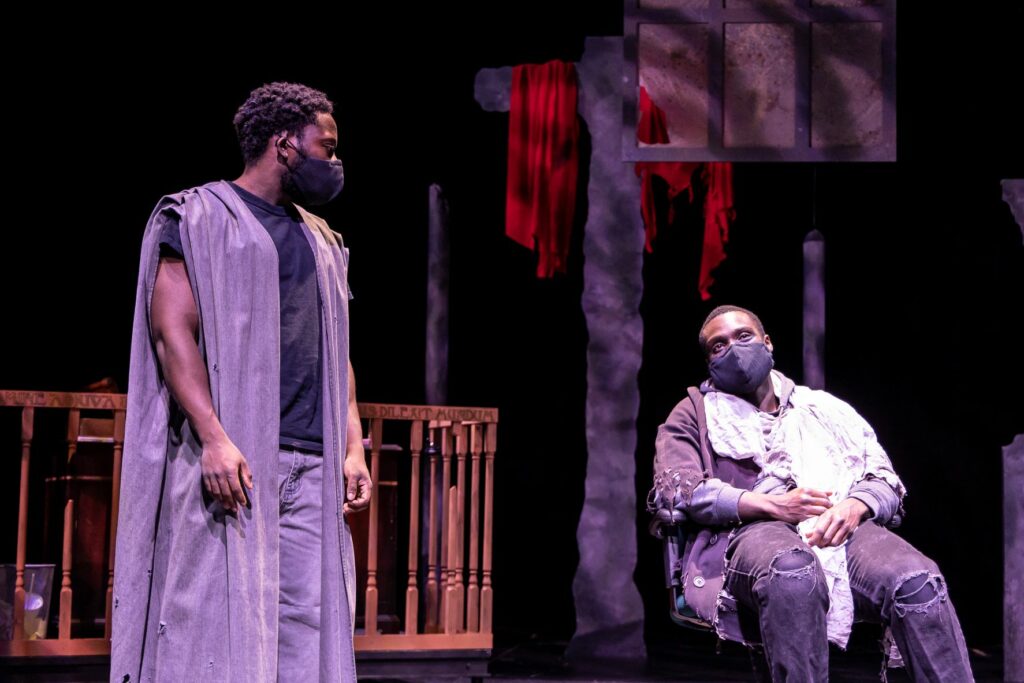
Membership:
a) Committee Membership
- There must be at least one representative (role described below) from each degree track area on the committee at all times except on the graduate level.
- Members must decide to be a representative or a volunteer. Representatives are expected to attend meetings, report back to their degree track as needed, and can be asked to assist in leading projects, programs, etc., by the co-chairs. Volunteers can attend meetings if they want and they can be involved in projects, programs, etc., on a voluntary basis.
- The representative term limit is two semesters. Representatives may continue for an additional two semesters with permission from the School of Theatre director.
- The co-chairs will maintain a membership list that indicates if members are representatives or volunteers.
- Faculty cannot serve as representatives (the goal is to have at least one student rep. from each degree track), but they can be appointed as co-chairs or serve as volunteers.
- Graduate students may nominate any SOT graduate student to be a representative. The goal will be to recruit four graduate students regardless of degree track, but every effort will be made to select graduate students from different degree tracks to increase representation across programs.
b) Meeting Scheduling Conflicts for Representatives
- If a representative is unable to attend meetings due to schedule conflicts during a specific semester, they can change their status to a volunteer. They must inform committee co-chairs of the need for this change as early as possible when the semester begins so a new representative can be nominated from the degree track if necessary. A representative may appoint one alternate representative from their degree track to attend meetings when the representative is not available. The representative is responsible for sharing meeting information with the alternate representative when necessary. The alternate representative will not be formally added to the committee contact list unless they join the committee formally as a volunteer. This will keep membership as simple as possible for co-chairs to manage.
c) Leadership
- Co-chairs are appointed by the director of the School of Theatre.
- The co-chair structure consists of one faculty member and two students (student 1 and student 2).
- Faculty co-chairs have a term limit of 4 semesters.
- Student co-chairs will have a term limit of two semesters with possible renewal of two additional semesters with School of Theatre director permission.
- Student co-chairs can be student employees and they can be paid to perform their role on the committee if the School of Theatre director wants.
- The faculty co-chair will schedule meetings to accommodate as many representatives as possible. Volunteers will not be included in meeting Doodle polls. However, volunteers will be notified when meetings are happening via email.
- Student 1 will make the first draft of the agenda for meetings (and share them with the faculty co-chair at least one day prior to the next scheduled meeting) and student 2 will take meeting minutes and maintain the Scaffolding Change shared Google drive (this consists of adding agendas and meeting minutes to the Google drive in an organized way).
- The faculty co-chair will schedule full committee meetings and co-chair meetings, host meetings on Zoom, distribute the agenda with the meeting reminder and Zoom link, and collaborate with student 1 on the agenda as needed once a draft is created.
d) Meeting frequency
- Meeting frequency will be determined by the co-chairs based on the current objectives and goals of the committee.
Recruitment:
a) Onboarding
- New members (volunteer or representative) will be asked to read our “Anti-Racist Action Plan” and agree to the committee goals.
- New members will have an orientation meeting with the co-chairs of the committee via Zoom.
- New members will submit a statement explaining why they want to join.
- New members must decide if they want to join as a representative or as a volunteer as stated above.
b) Advertising Membership Opportunities
- There will be one “Scaffolding Change Interest Meeting” at the beginning of each semester via Zoom. This meeting will be advertised to the full SOT listserv. Co-chairs will do their best to answer any questions that come up at the meeting.
- Shortly after the “Scaffolding Change Interest Meeting,” new membership opportunities will be advertised once at the beginning or end of each semester using the SOT listserv in the form of a “Scaffolding Change Semester Recruitment Email.” This will be an email from the co-chairs dedicated specifically to recruitment for the committee. The email will include a copy of the “Anti-Racist Action Plan,” a description of the committee charge, an explanation of the committee roles (representative, volunteer, alternate representative), a list of degree tracks that need a representative on the committee, and instructions that explain how to nominate a representative (email their name, a statement about why they should be a representative, and their degree tack to the co-chairs in response to the email). The email will also include instructions that explain how to become a volunteer (respond with a statement explaining why you would like to volunteer).
- Anyone can nominate a student to be a representative on the committee in response to the “Semester Recruitment Email.” The co-chairs will tabulate the student nominations and read the statements to make a determination regarding confirming representatives.
